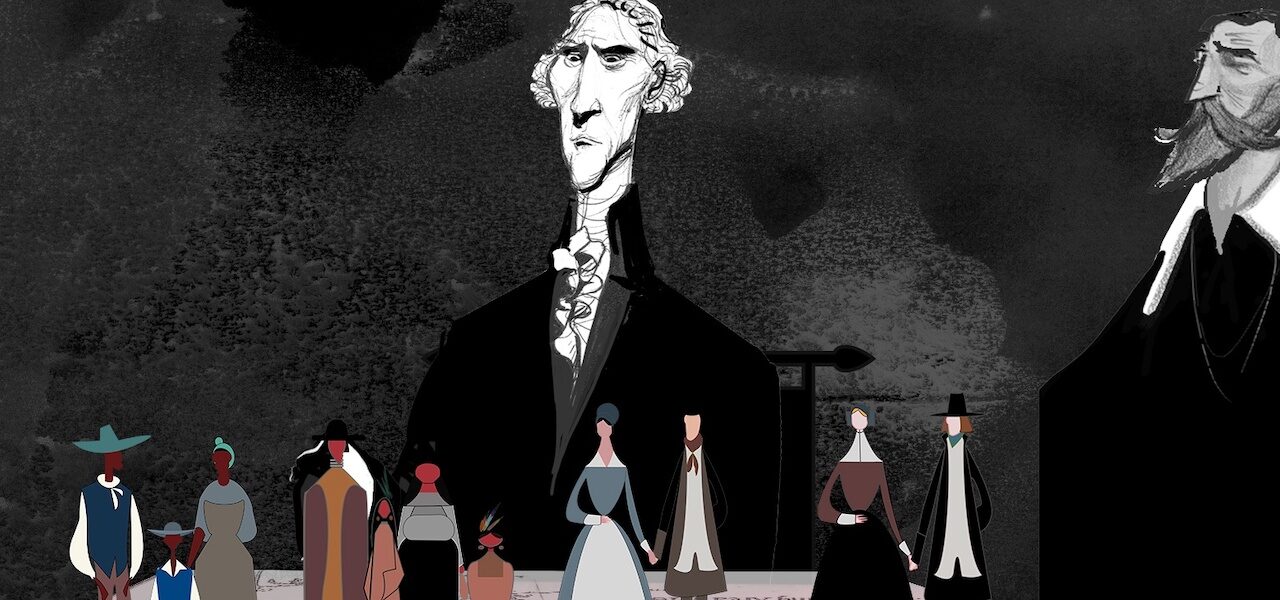
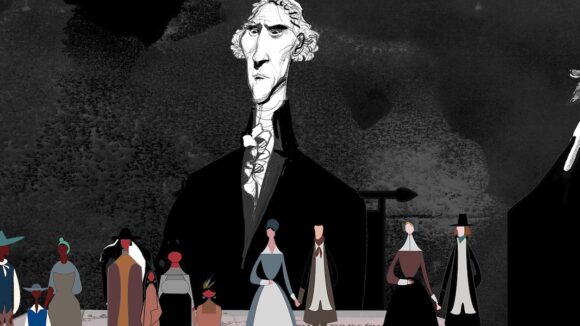
This New Animated Series Sets Out To Tell ‘The History Of White People In America’ (Interview)
As debate about representation in the animation industry rages, a new documentary show has arrived with perfect timing and a tartly ironic title. It’s called The History of White People in America.
Of course, the title doesn’t signal that the characters are exclusively white. The first episode explains how “whiteness” was first defined in the context of early American legislation for slavery, setting the tone: the series is an exploration of race relations in the nation, ranging from the colonies to Obama.
This long and painful narrative is told as a musical, the original score mixing song and spoken word. Each episode deftly packages testimonies and other archive materials into a bite-size vignette about America’s race history. The series is co-produced by Room 608 and Independent Television Service (ITVS), and is presented under PBS’s Independent Lens documentary banner.
After playing festivals, including Tribeca, the first three episodes have now launched on the World channel on Youtube. Watch them here. That’s it for now — while The History of White People in America is conceived as a 16-part series, the remaining 13 episodes have yet to be made (although the filmmakers have secured funding for the next three).
In the meantime, we caught up with Ed Bell, one of the show’s six credited directors. Bell is an industry veteran: he has worked as an animator, designer, and visual development artist for major studios on projects as varied as Who Framed Roger Rabbit, The Ren & Stimpy Show, The Simpsons, Bebe’s Kids, and Happily Ever After: Fairy Tales for Every Child, and directed commercial projects for the likes of Coca-Cola, Sony, and Nike. He has also contributed visdev for upcoming films like Disney-Pixar’s Soul and Netflix’s Wendell and Wild. He assumed various visual roles on this series, in which he was involved from the very start…
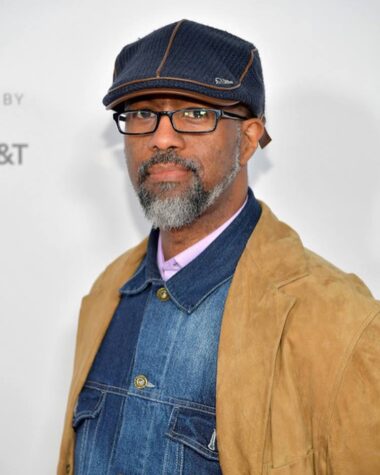
Cartoon Brew: How did the project, and your involvement in it, come about?
Ed Bell: My buddy, writer-director Jon Halperin, hit me up right after the election of 2016. I had done some low-budget animation for his old documentary company, and we had wanted to collaborate again since then. He was livid at the current national state of mind and how no one in his circles seemed to have any context for what was happening.
Jon wanted to revisit an idea that had been floating in the ether. We wondered whether animation could be a way to describe the social virus that directly led to our current crisis in the industrial world. Social injustice is something we often shy away from in animation, but cartooning has its roots in social commentary, speaking truth to power.
We theorized that animation might have a way of getting past your natural cognitive biases and open the way for empathy in viewers, for a wider perspective of how you and your neighbors relate to one another. Jon had been working with my old boss from Colossal Pictures days, Drew Takahashi. Drew and I did the animation for Episode 1 ourselves.
We had to enlist a team of academic advisors to make sure our historical accuracy was on point. I think we always knew we needed music to help convey the narratives we were highlighting. So Pierce [Freelon] came to the project at the same time, bringing his academic prowess to the table.
You’re one of six credited directors. How do you divide responsibilities?
I storyboarded, drew the pictures, and animated, as well as being on story. Jon writes the scripts and produces. Drew handles After Effects and designs motion graphics, like the opening collage animation in the pilot. Our music team is Pierce and Aaron [Keane]. Our producer and liaison with ITVS is Clementine Briand.
The series covers an eclectic range of graphic styles, as well as archive images like photos and newspaper cuttings. Why this visual approach? How was it developed?
We are attempting to communicate some of our own cognitive dissonance with being animation artists in this culture. Animation dares to go to those uncomfortable places we all need to deal with. We dare to use animation to lift an audience out of the shameful ignorance of our own culture.
The visual universe of The History of White People in America is born from the visual media that the creators grew up with. As an African-American boy I lived for comics, manga, games, New Yorker covers, and animated features. At the same time as I was forming an identity as an artist — an artist in a world that keeps telling me I’m a second-class citizen.
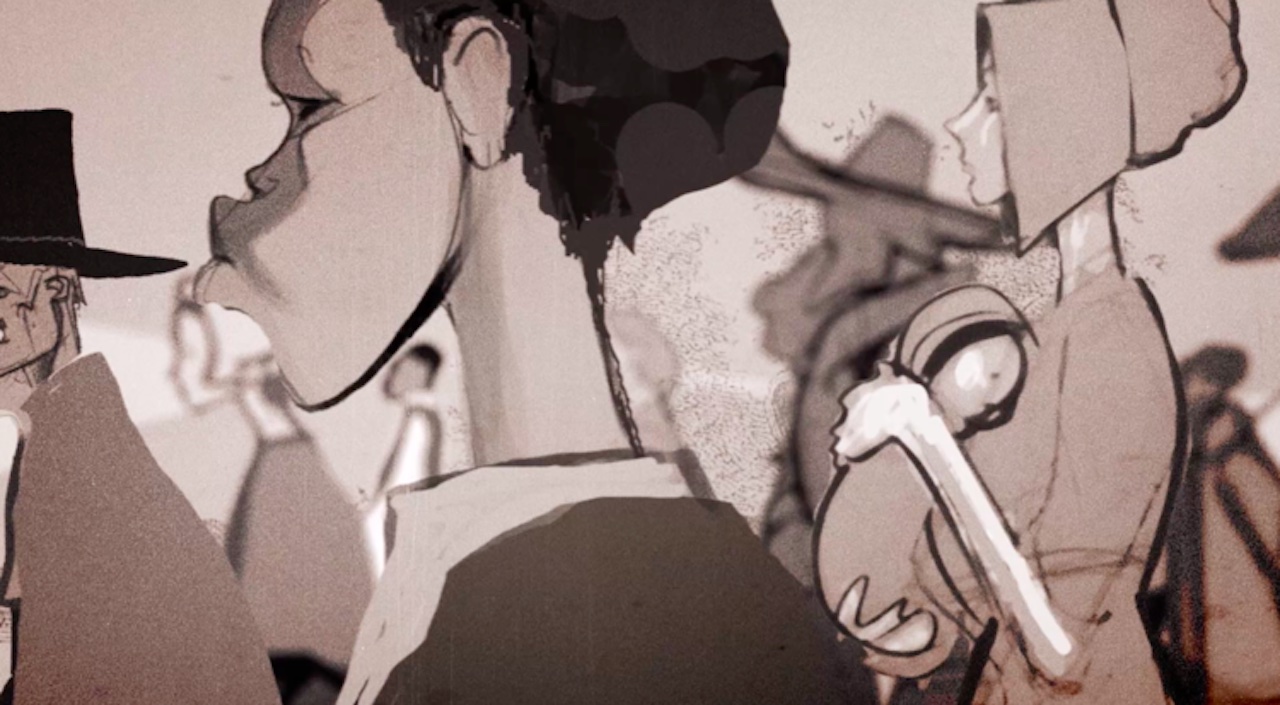
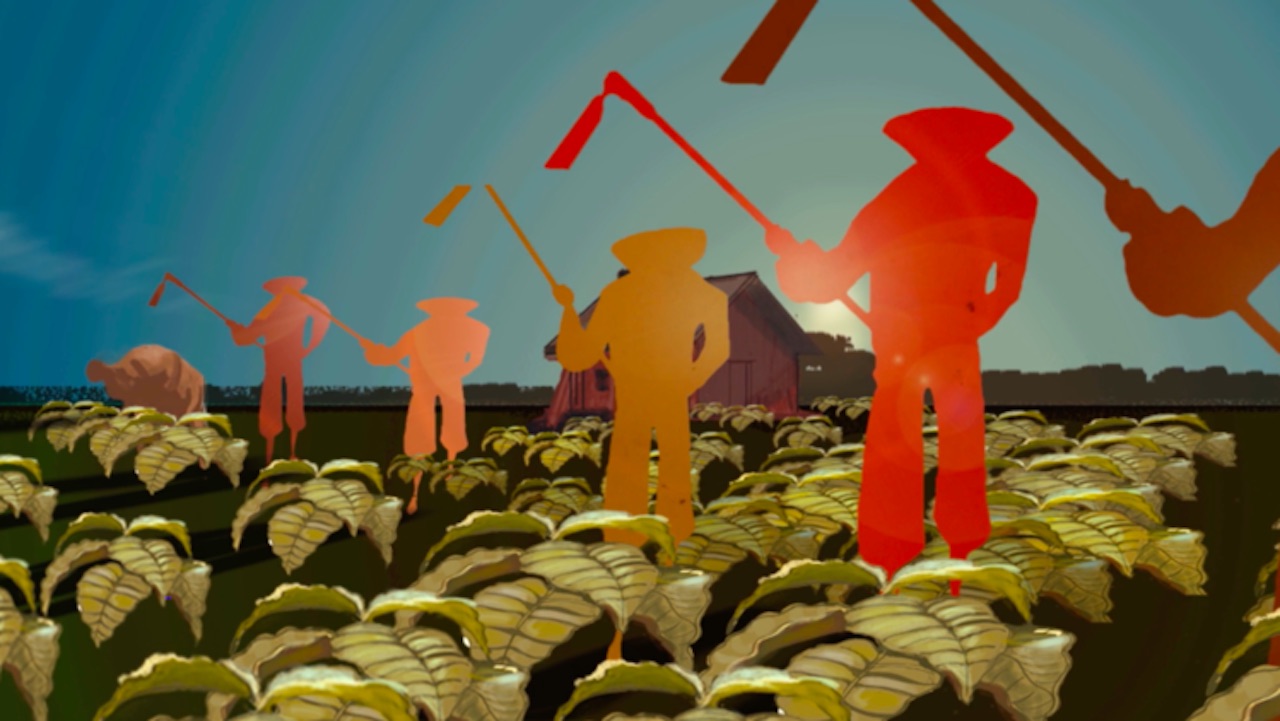
Most media placed me in a pretty bleak place in the world: stamped from the beginning as “less-than,” despite my people proving our excellence in every area of American life. Stamped, in part, by powerful visual propaganda throughout the 20th century. But some of that same media pointed me to profound truths that opened my heart and increased my empathy. So this is what the artist does with their life conditions — we use the existing tropes to express our pain and passion.
Drew, the series’ animator and editor, and I are students of 20th-century illustration, graphic design, and animation. We see it in all its glory and ugliness, and make it our own. These forms of media had everything to do with how the current culture views people, both inside and outside the “normal” world of affluent white life. So we make them colors on our digital palette and paint the picture the historians plugged us into.
The music is central to the series. Can you describe your working relationship with the composers — were the score and animation produced in tandem?
It’s a very interactive workflow. Our composers work to our script, building the musical structure unique to each episode, using the team as a sounding board for ideas. Sometimes Jon will make new choices about scripting or structure once he hears what our music team is coming up with. Then I board and build an animatic to the track, developing our visual approach as I go.
Drew and I go over boards and determine how much we can afford to do on a budget, making adjustments as brainstorms occur. Pierce and Aaron’s musical elements will then be inspired by the emerging visuals, and they will revisit the music to better complement the animation being previsualized in the animatic. By the time we start animating, the track is well in place, with only a few sonic layers left to create, once the scenes are completed.
The musicians are steeped in deep blues, gospel, and soul from the history of American music. They draw upon the talents of the legendary [singer and composer] Nnenna Freelon, and a host of great musicians she collaborates with. Nnenna is Pierce’s mother.
The history of race in America is long and complex, but your episodes are short. How difficult was it to trim your script to the appropriate length?
Very difficult indeed! But one of the caveats we had to work to was that the series should be made to be viewed on your phone. Youtube viewers are accustomed to getting information in five- or six-minute chunks. We worked hard to concentrate the information in a way that leads a viewer to find out more, get the details, and talk about it with others. Conversation is key to this project’s goals — key to a more open, just, and inclusive world, I believe.
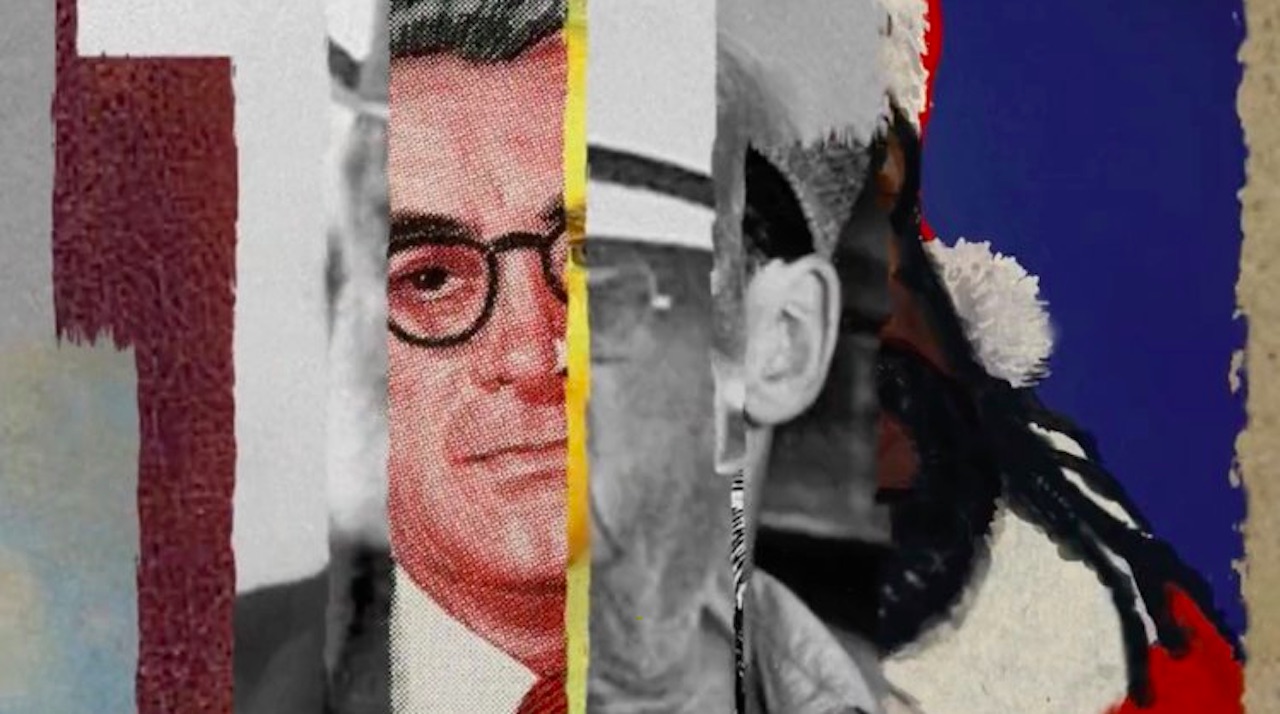
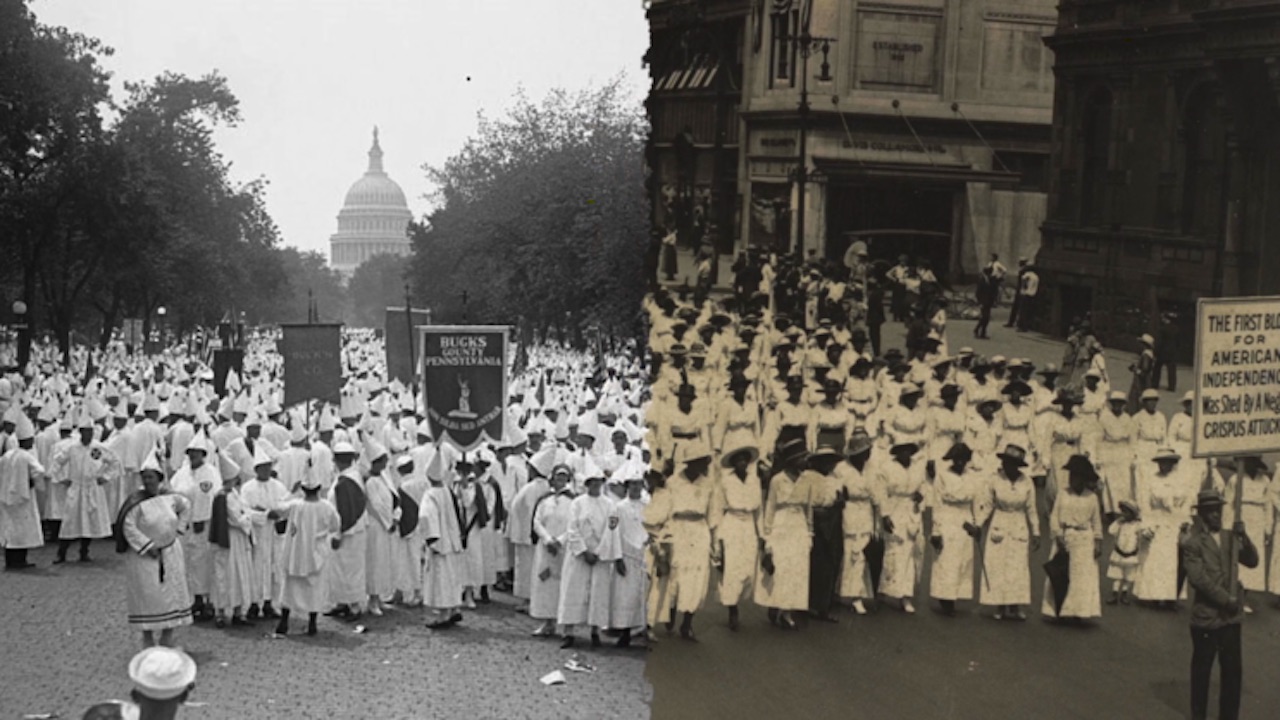
The history and experience of race vary across states. Has there been much variation in audience reactions at the various festivals these episodes have played? Have any reactions surprised you?
I have mostly been met with lots of support and understanding at festivals. We have yet to endure the social media onslaught, but it’s something we expect over the coming weeks. I have been surprised that so many people are ignorant of how state and federal laws have been used to limit the economic progress of people of color generally, and black people more specifically. It’s as if the whole country chose to forget Jim Crow happened.
Lots of my white colleagues were unaware that, except for fortunate outliers, black people don’t have any generational wealth or capital, or stake in land ownership — due to the direct intervention of state laws that make those economic gains impossible for 90% of us. I guess I’ve been immersed in this history for a few years now, and had internalized so much of my own struggle that I forgot how little Americans really understand about themselves.
What’s the status of the remaining 13 episodes — are they still being written? Has the renewed movement for racial justice changed your approach in any way?
The project was conceived in 2016, so we are gratified to have it supported by Independent Lens and World. They have awarded us funding for three more episodes, and we have started writing those scripts.
The series is conceived to be a 16-episode arc for one complicated character: America itself. We will be revising the season to better serve the current moment. The stories in the films will be told by eyewitnesses or descendants of eyewitnesses. For example, the arrival of the Pilgrims will be told by a Native American descendant who is steeped in the history of her ancestors. This will be a people’s history. When necessary, we will use historians who know how to tell a story, to elicit a truth in a turn of a phrase.
Watch the first three episodes of The History Of White People In America in on Youtube.
(This interview has been edited for brevity.)

